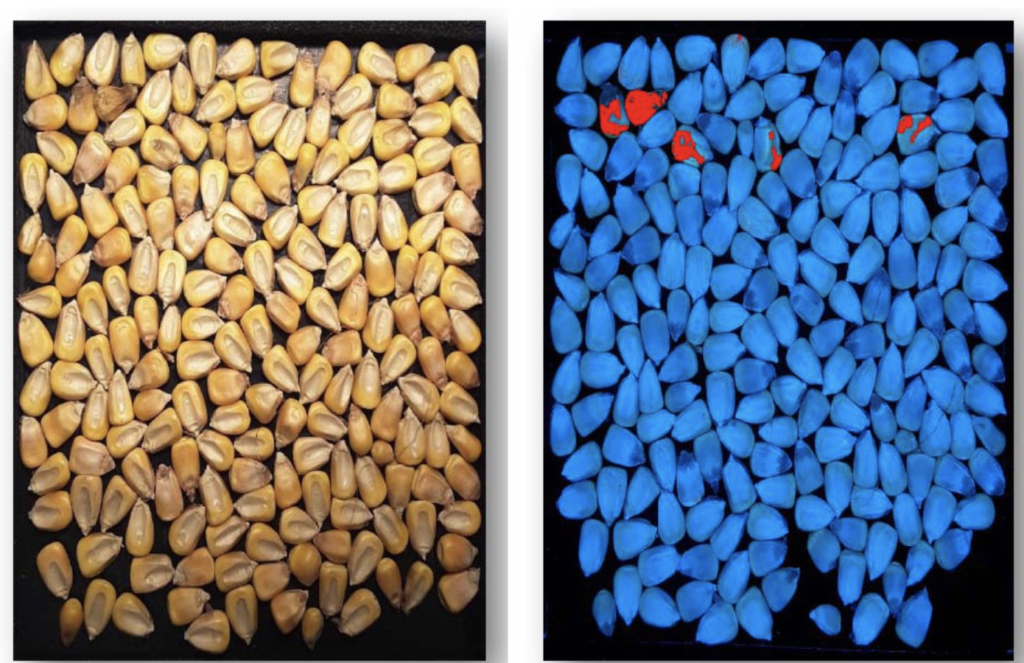
To protect human health, it’s important to keep aflatoxin levels very low in the food supply by finding and eliminating contaminated stock. This requires a person to test for and detect aflatoxin, as well as find the actual concentration and even type of aflatoxin.
Just because Aspergillus fungus is visible does not guarantee there’s aflatoxin, but it is a good indication that aflatoxin may be present. Thus, removing moldy kernels can help reduce the aflatoxin level.
UV light can be used to detect the green/blue fluorescence of aflatoxin, although there are many compounds that show similar fluorescence, so this is not a very reliable method. It also requires the aflatoxin to be on the surface and can’t detect aflatoxin inside pods or kernels.
The most reliable methods of testing for aflatoxin involve some form of chemical extraction and test method. While more accurate, these methods can be expensive and require more sophisticated equipment and laboratory infrastructure. Highly accurate methods are usually required to meet regulatory requirements.

